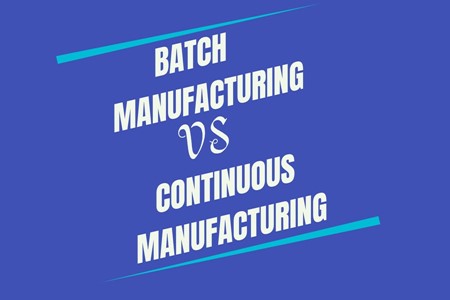
The manufacturing processes used in the chemical industry have evolved over the years, with both batch and continuous manufacturing methods playing significant roles. Each approach offers its own set of advantages and disadvantages, catering to different types of production requirements, efficiencies, and product characteristics. In this blog post, we delve into the pros and cons of batch and continuous manufacturing in the chemical industry.
Batch manufacturing is a production method where products are manufactured in discrete quantities or batches. In this approach, a specific quantity of raw materials is processed together to create a batch of finished products. Each batch is treated as a separate unit, and the production process is carried out in a step-by-step manner. Once a batch is completed, the equipment is cleaned, and a new batch can be initiated with potentially different raw materials or formulations.
Continuous manufacturing is a production method where products are manufactured without interruption in a continuous flow. In this approach, raw materials are continuously fed into the process, and the finished products are also continuously collected. Continuous manufacturing processes are designed to operate in a steady-state manner, with consistent conditions maintained over time.
Batch Manufacturing:
Pros:
Flexibility: Batch manufacturing allows for easier changes in production parameters, making it ideal for small-scale or specialized productions. This flexibility permits manufacturers to tailor processes for various formulations or specific customer demands.
Quality Control: As each batch is treated as an individual unit, it becomes simpler to monitor and control quality. Any deviations or defects can be addressed before the entire batch is compromised.
Equipment Utilization: Batch processes utilize equipment for different products sequentially, maximizing equipment utilization and minimizing downtime.
Cons:
Time-Consuming: The need to clean and set up equipment for each batch can lead to longer production times. This can affect the overall efficiency of the process, especially for high-volume production.
Inconsistency: Since each batch can be slightly different due to variations in raw materials or operating conditions, maintaining consistency can be challenging.
Waste Generation: Cleaning between batches and potential product losses during startup and shutdown phases can lead to higher waste generation.
Continuous Manufacturing:
Pros:
Efficiency: Continuous manufacturing eliminates the need for frequent start-up and shutdown procedures, leading to reduced downtime and higher overall production efficiency.
Consistency: Continuous processes are inherently more consistent due to steady-state operations, reducing the likelihood of variability between batches.
Scaled Production: Continuous manufacturing is well-suited for large-scale production, ensuring a streamlined and continuous supply of products.
Cons:
Complexity: Continuous processes often involve intricate setups and controls, requiring more sophisticated engineering and maintenance.
Limited Flexibility: Making changes to a continuous process can be complex and time-consuming, which may not be suitable for small-scale or varied production needs.
Quality Control Challenges: Detecting quality issues in a continuous process can be more challenging due to the constant flow of materials.
Conclusion:
In the dynamic landscape of the chemical industry, choosing between batch and continuous manufacturing hinges on factors such as product type, production volume, and process complexity. Batch manufacturing offers flexibility and quality control, making it apt for small-scale, specialized productions. On the other hand, continuous manufacturing excels in efficiency, consistency, and large-scale production scenarios. Striking a balance between the two approaches or implementing hybrid models might be the key to harnessing the best of both worlds.
As the chemical industry continues to innovate, manufacturers must carefully evaluate their specific needs to determine whether to go the batch route, opt for continuous manufacturing, or explore a combination of both.